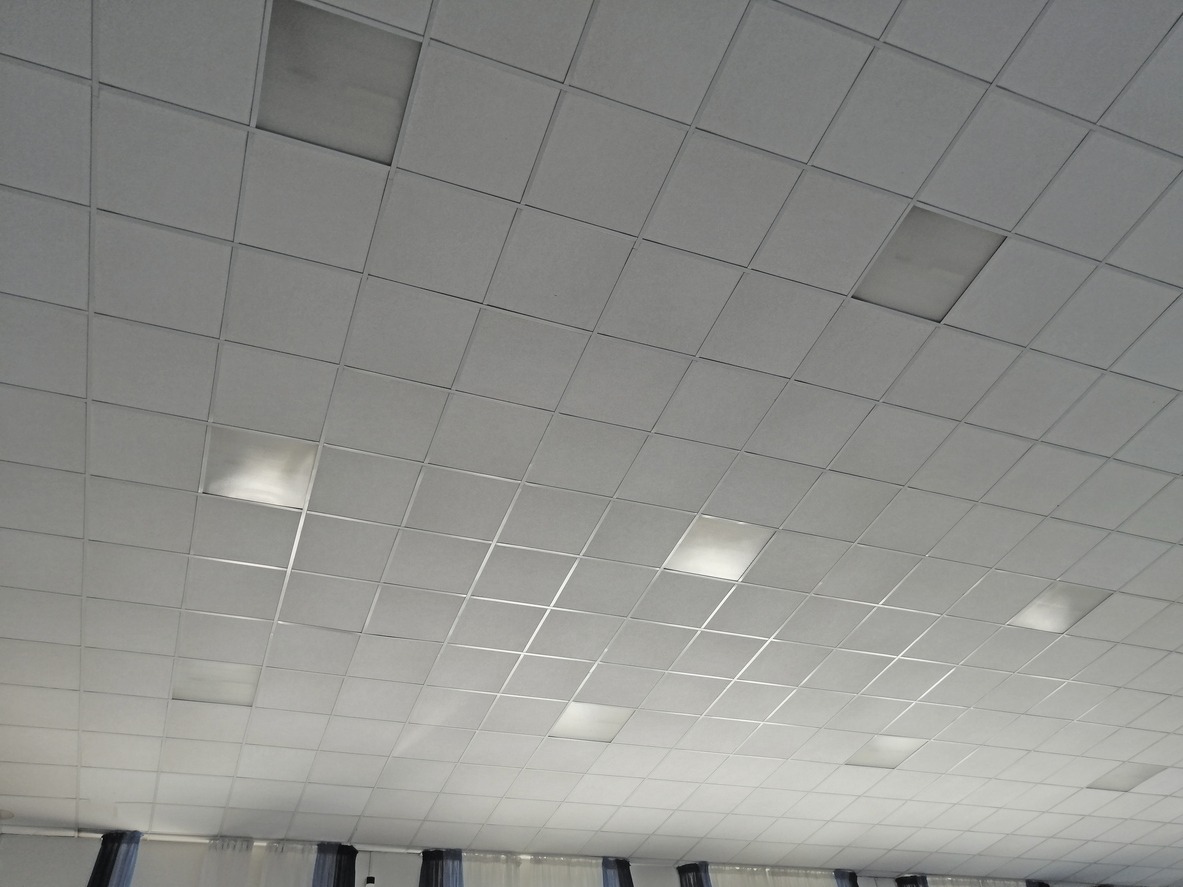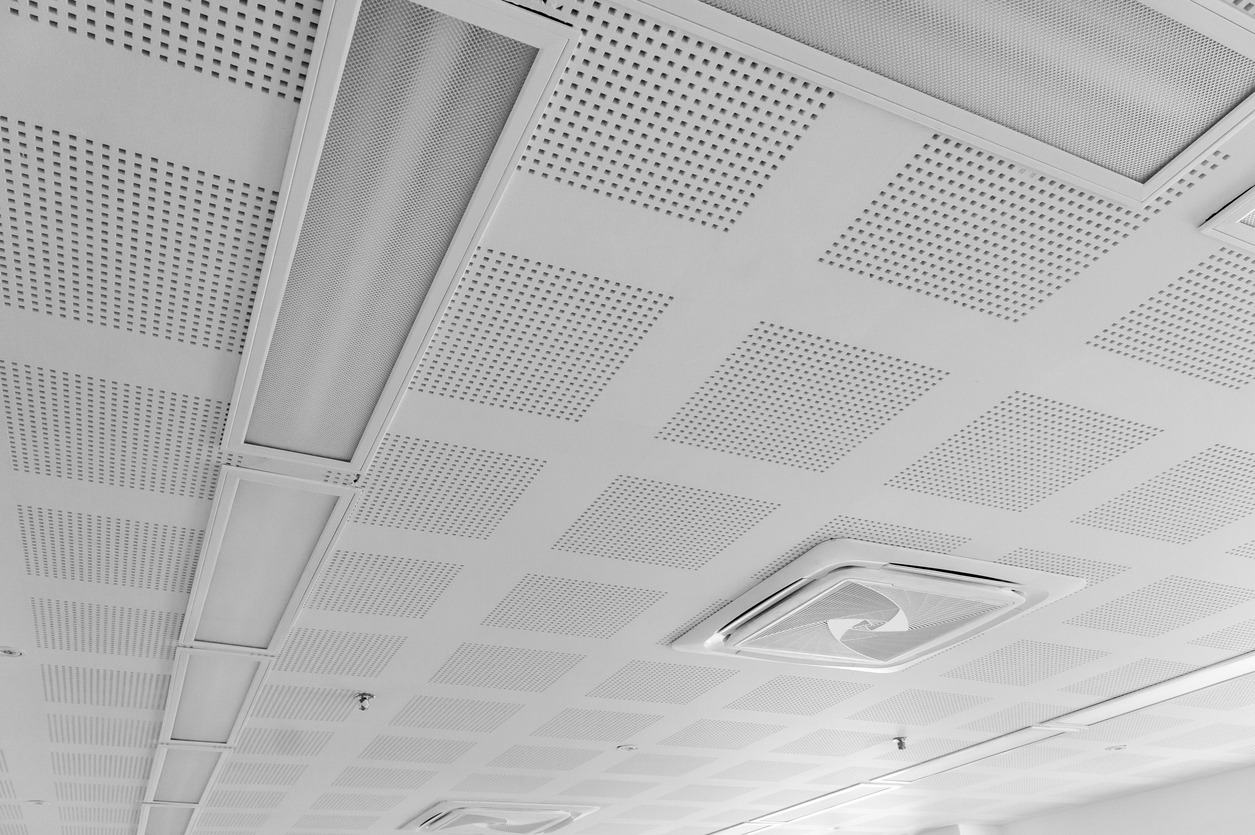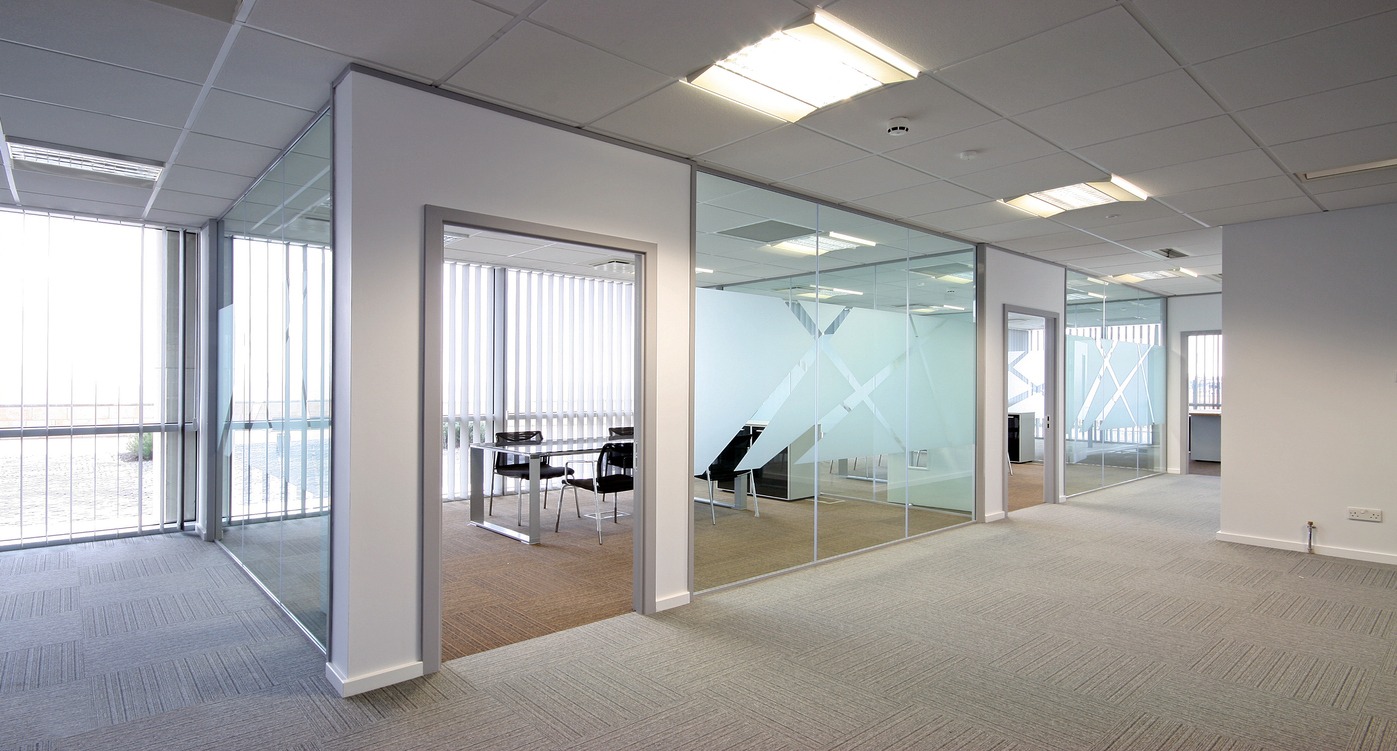In order to make a space or room more comfortable and inviting, it has to be aesthetically pleasing and free from things that can stress out people, such as noise. Keeping the noise out of a certain room can be challenging, especially if your home or space has rooms above it. Luckily, there are solutions for this problem, such as the use of acoustic ceiling tiles.
Acoustic ceiling tiles have been popular for both commercial and residential buildings as they offer greater control of sound in certain areas while improving the aesthetics at the same time. If you are interested in using acoustic ceiling tiles for your home, know that they come in different materials, designs, and sizes. There are also a lot of benefits that you can get from using them. If you want to learn more about these, we are here to help you. In this article, we are going to discuss the characteristics, types, advantages, and disadvantages of acoustic ceiling tiles.
What are Acoustic Ceiling Tiles?
Acoustical treatment is not exclusive to walls as they can also be applied to your ceilings. In fact, ceiling treatments are just as, or in some cases, more important when it comes to taming acoustical issues in a room. Acoustic ceiling tiles are a type of building material used to absorb sound and reduce noise pollution in a room or building. Most of the time, they are made of lightweight materials, like wood and mineral fiber. They are installed on the ceiling to improve the acoustics of the space.
They work by absorbing sound waves that would otherwise bounce off hard surfaces, such as floors and walls, and create unwanted echoes and reverberation. With this, you’ll be able to create a more comfortable and productive environment by decreasing noise distractions and improving speech intelligibility.
Acoustic ceilings usually consist of tiles sectioned in metal grids. They are ideally used in areas where there are a lot of hard surfaces and sound bounces easily from walls to ceilings to floors. There are also different levels of reflectivity, fire, and humidity resistance when it comes to acoustic ceiling tiles. They are commonly used in commercial and residential buildings to improve the quality of the indoor environment.
Different Acoustic Ceiling Tile Materials
As we’ve mentioned earlier, there are different types of acoustic ceiling tiles available today. Each material has its own characteristics and suitability for different applications. Below are some of the various types of acoustic ceiling tile materials:
Mineral Fiber Ceiling Tiles
Mineral fiber ceiling tiles are the most common type of material. They are made from a combination of mineral wool fibers, fillers, and binders. This material offers excellent sound absorption properties and is available in different sizes, textures, and edge details. They are popular for their cost-effectiveness and versatility in various environments. They are commonly used in offices and retail spaces.
Fiberglass Ceiling Tiles
These ceiling tiles are made from fine glass fibers bonded together with resin. Fiberglass ceiling tiles are lightweight, durable, and moisture-resistant. These make them great for rooms with high humidity. They also offer good sound absorption, and they are available in different designs and finishes.
Metal Ceiling Tiles
These acoustic ceiling tiles are made from steel or aluminum. They are popular for their durability, strength, and resistance to fire and moisture. Metal tiles are commonly used in commercial and industrial settings where aesthetics and robustness are vital. Metal ceiling tiles can also be perforated to improve sound absorption.
Wood Ceiling Tiles
Acoustic ceiling tiles made of wood can add a natural and warm aesthetic to a space. They can be made of different types of wood, such as natural wood veneers or engineered wood. They can provide moderate sound absorption and can be customized in terms of shape, design, and finish. Most wood ceiling tiles are used in areas where aesthetics play an important role, such as conference rooms, offices, and upscale residential settings.
PVC Ceiling Tiles
Polyvinyl Chloride or PVC ceiling tiles are lightweight, durable, and resistant to humidity and moisture. They can be used in rooms with high moisture levels, such as in kitchens and bathrooms. They are also easy to install and maintain, making them a practical choice for these particular areas.
Gypsum Ceiling Tiles
These are acoustic ceiling tiles that are made from gypsum plaster. They are popular for being fire-resistant. Gypsum ceiling tiles also offer good sound absorption properties. They are also commonly used in commercial buildings, healthcare facilities, and schools.
Where are Acoustic Ceiling Tiles Used?
Acoustic ceiling tiles are widely used in various applications in order to improve the acoustic environment and enhance the overall functionality and aesthetics of a certain room or space. But where are they commonly installed? Below are some of the common applications of acoustic ceiling tiles:
Commercial Buildings
Acoustic ceiling tiles are widely used in commercial buildings, such as restaurants, retail stores, offices, lobbies, and conference rooms. It’s because they can help reduce noise levels, improve speech intelligibility, and create a more comfortable environment for employees and customers.
Educational Institutions
A lot of schools, colleges, and universities also use acoustic ceiling tiles in their classrooms, libraries, halls, and other common areas. These ceilings can help control the reverberation of noise, allowing students and teachers to communicate well and enhance the learning experience.
Healthcare Facilities
Acoustic ceiling tiles are also commonly found in clinics, hospitals, and laboratories. They can help maintain privacy, reduce noise distractions, and create a peaceful atmosphere for patients, staff, and visitors.
Theaters and Auditoriums
Acoustic performance is very important in theaters, concert halls, and auditoriums in order to get optimal sound quality. Acoustic ceiling tiles are used to control echoes and reverberations, as well as to enhance the clarity of music, speech, and performances.
Residential Buildings
You can also install acoustic ceiling tiles in residential buildings, especially in places where noise reduction is needed. These are usually used in bedrooms, home theaters, home offices, and living rooms to create a quieter and cozier living space.
Advantages of Acoustic Ceiling Tiles
There are several characteristics that make acoustic ceiling tiles an effective solution when it comes to reducing noise pollution and improving the acoustic quality of indoor spaces. Below are the advantages that you can get from using acoustic ceiling tiles:
Sound Absorption Capabilities
Acoustic ceiling tiles are made to absorb sound waves and decrease noise levels in a room. They are made of porous materials that can trap sound and prevent it from bouncing off hard surfaces. This makes them effective at absorbing sound waves, reducing noise pollution, and creating a more comfortable environment in any space.
Fire Resistance
A lot of acoustic ceiling tiles are made of materials that are resistant to fire and meet fire safety codes. This means that in addition to absorbing sound waves, acoustic ceiling tiles are also a safe choice for commercial and public buildings as they can resist fire and will not easily collapse in case of a fire.
Durability
Acoustic ceiling tiles are also made to withstand wear and tear. They can last for a lot of years with proper installation and maintenance. No wonder they are one of the top choices for commercial buildings and offices.
Sustainability
There are manufacturers that produce acoustic ceiling tiles that are made of recycled materials. Some are also recyclable. This means that when it comes to acoustic ceiling tiles, you are making a sustainable choice for environmentally-conscious building projects.
Aesthetics
There’s a wide range of sizes, textures, and colors of acoustic ceiling tiles. This allows for customization to match the design and aesthetic needs of a certain space.
Easy Installation
Acoustic ceiling tiles are very easy to install. They can be dropped or glued up in a straightforward manner. Aside from that, these ceiling tiles can also be installed through a nail-up method. However, if you do not have a grid system, you can opt for a glued or nail-up installation.
Affordability
Other soundproofing options for rooms and buildings can cost a lot. But with an acoustic ceiling, you will be able to find a solution at a reasonable price.
Versatility
It is quite annoying to think about a ceiling that is filled with unsightly gray foam panels stapled to the wall. If you do not like this, you have the option to use acoustic ceiling tiles, which will allow you to have a functional and stunning finished ceiling. There are many aesthetically pleasing designs of acoustic ceiling tiles. Some have intricate patterns and elegant colors that will enhance any space in your home.
Disadvantages of Acoustic Ceiling Tiles
While there are a lot of benefits you can get from having acoustic ceiling tiles installed in your home or business space, they also come with a few disadvantages that you need to learn about. Below are some of them:
Limited Soundproofing
Acoustic ceiling tiles are popular for absorbing sound waves. However, note that they may not provide enough soundproofing to block out noise or sound completely from adjacent rooms or buildings. They can just help lessen the noise inside a certain space.
Installation Difficulty
The installation of acoustic ceiling tiles is easy for professionals, but not for others who are thinking of installing it themselves. Installing acoustic ceiling tiles needs specialized skills and equipment. This can make the process time-consuming and challenging.
Cost
Acoustic ceiling tiles are more affordable compared to other soundproofing treatments. However, they are more expensive than other ceiling materials. This makes them a less attractive option for some building projects.
Maintenance
Acoustic ceiling tiles need regular maintenance. These include cleaning and replacement, to make sure that they remain effective and in good condition.
Limited Design Options
While acoustic ceiling tiles come in different sizes, shapes, colors, textures, and finishes, they may not provide the same design flexibility as other types of ceilings, such as plaster or wood. That is why they are mostly used in commercial and office spaces rather than in residential homes.
Conclusion
Acoustic ceiling tiles are among the best solutions when it comes to improving the acoustic environment in different spaces. They have sound absorption capabilities, making them great to be installed in commercial spaces, schools, offices, hospitals, residential buildings, and more. Aside from that, they also come with other benefits like being fire-resistant and durable. However, while acoustic ceiling tiles offer many advantages, you also have to consider their limitations and drawbacks. But overall, we can say that acoustic ceiling tiles may help create a comfortable, functional, and aesthetically pleasing space. We hope this article helped you learn more about acoustic ceiling tiles.




